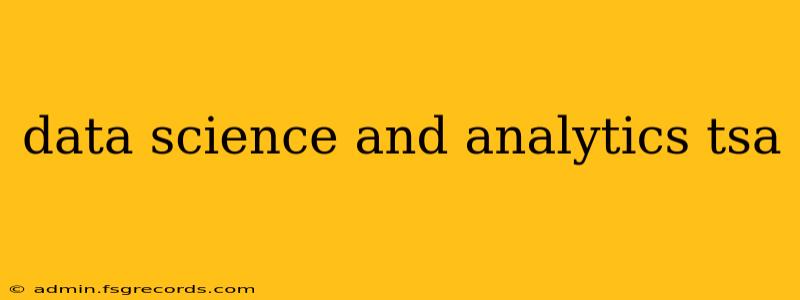The Transportation Security Administration (TSA) faces the immense challenge of securing the nation's transportation systems while ensuring the smooth flow of passengers and cargo. This monumental task is increasingly reliant on data science and analytics to enhance efficiency, improve security measures, and predict potential threats. The application of these advanced techniques is transforming how the TSA operates, moving beyond reactive measures to a more proactive and intelligence-driven approach.
How Data Science Enhances TSA Operations
The TSA collects an enormous amount of data daily, including passenger screening data, baggage screening information, threat intelligence reports, and airport operational statistics. This raw data, however, is essentially useless without sophisticated analytical tools to extract meaningful insights. Data science provides the necessary framework to transform this data into actionable intelligence, leading to improvements across multiple areas:
1. Enhanced Threat Detection
- Predictive Modeling: Machine learning algorithms analyze historical data to identify patterns and anomalies that might indicate potential security threats. This allows the TSA to prioritize resources and focus on higher-risk individuals or items.
- Anomaly Detection: By identifying deviations from normal behavior or patterns, data science can flag suspicious activities or objects, enabling quicker intervention. This is particularly valuable in identifying potentially dangerous items that might be missed by traditional screening methods.
- Risk Assessment: Data-driven risk assessments allow the TSA to prioritize screening procedures based on the assessed risk level of passengers and baggage. This optimizes resource allocation and improves the overall efficiency of security checks.
2. Optimizing Airport Operations
- Queue Management: Analyzing passenger flow data allows the TSA to optimize staffing levels and resource allocation at checkpoints, minimizing wait times and improving passenger experience.
- Predictive Resource Allocation: By forecasting passenger volume and security needs, the TSA can proactively adjust staffing and deploy resources more effectively, reducing bottlenecks and delays.
- Improved Efficiency: Data-driven insights help identify areas for process improvement, leading to more efficient security operations and a reduction in operational costs.
3. Strengthening Cybersecurity
- Network Security: Data science plays a crucial role in monitoring and analyzing network traffic to identify and prevent cyber threats against TSA systems.
- Data Protection: Advanced analytics can help detect and respond to data breaches, protecting sensitive passenger information and critical infrastructure data.
Challenges and Considerations
While the application of data science offers significant benefits to the TSA, it also presents several challenges:
- Data Privacy: Balancing the need for enhanced security with the protection of passenger privacy is a critical concern. Robust data anonymization and security protocols are essential.
- Data Integration: The TSA works with diverse data sources, requiring sophisticated integration techniques to ensure data consistency and accuracy.
- Algorithmic Bias: Care must be taken to mitigate potential biases in algorithms that could lead to discriminatory outcomes. Regular audits and validation are necessary.
- Maintaining Public Trust: Transparency and communication are vital to build and maintain public trust in the TSA's use of data-driven technologies.
The Future of Data Science and the TSA
The future of TSA operations will undoubtedly be shaped by continued advancements in data science and analytics. We can expect to see more sophisticated predictive models, improved anomaly detection systems, and a greater emphasis on proactive threat mitigation. As technology evolves, the TSA will need to adapt and leverage these advancements to ensure the continued safety and security of the nation's transportation system. The integration of artificial intelligence (AI) and machine learning will further refine these capabilities, moving toward a more autonomous and efficient security infrastructure. The ongoing challenge will be to balance these technological advancements with ethical considerations and the preservation of passenger privacy.

